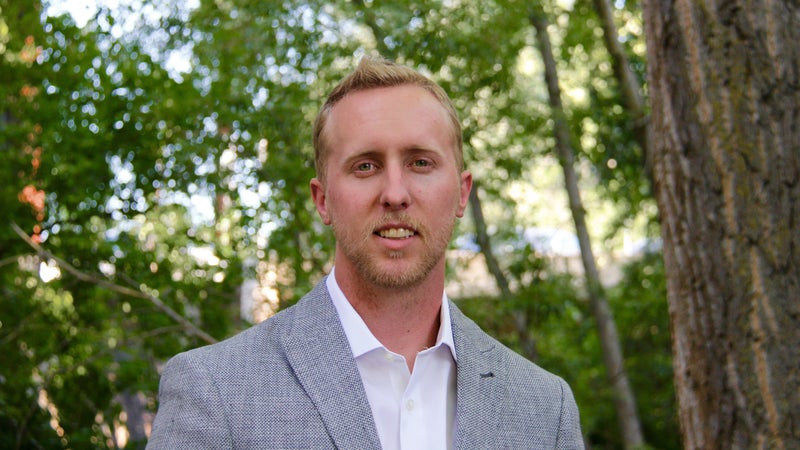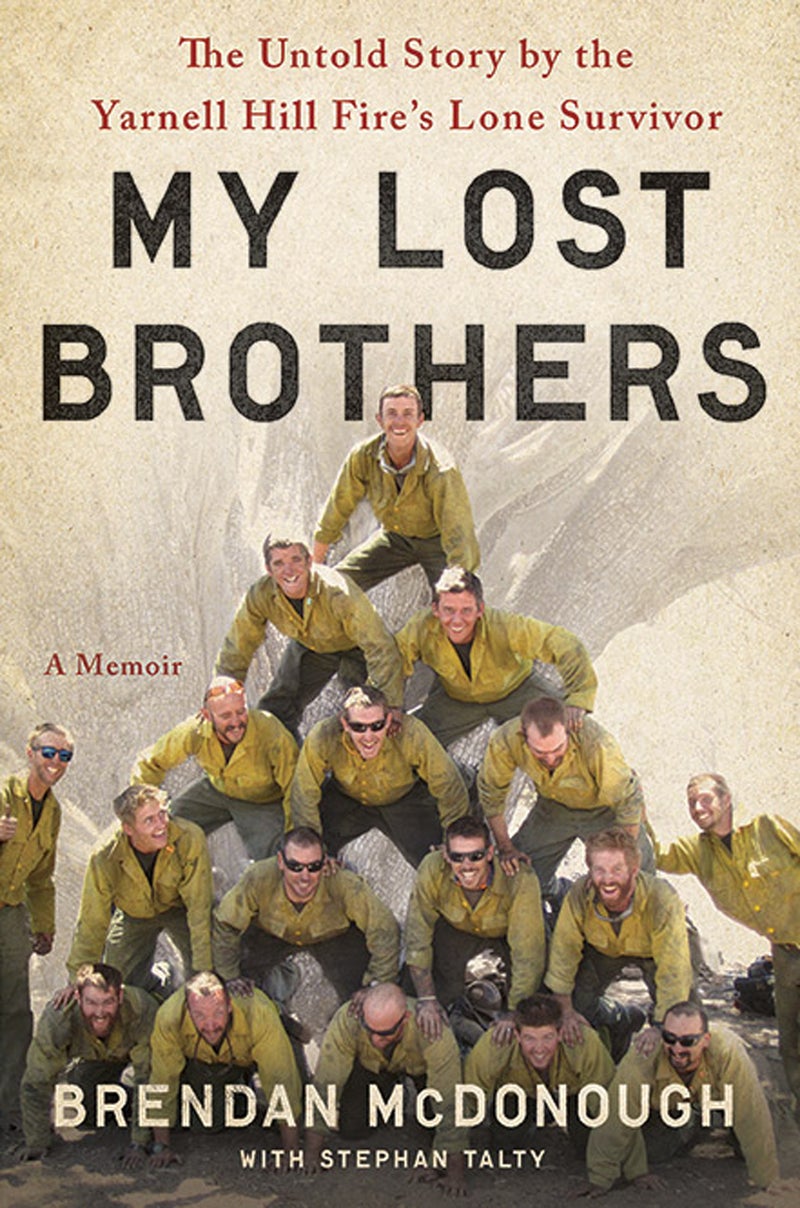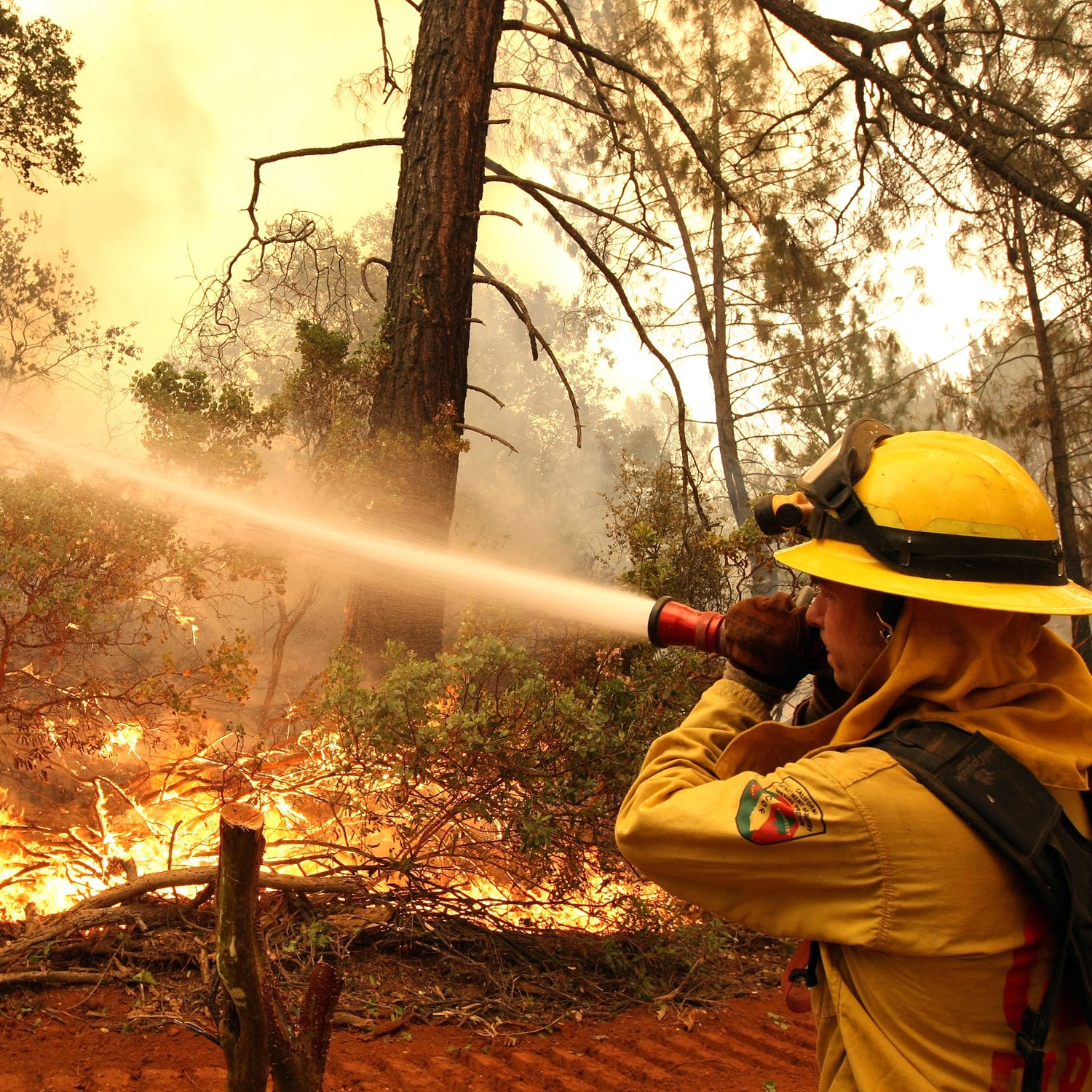Even though I made progress, there were things that triggered the bad old thoughts. Even now, every time we get to March and April, I can feel myself tensing up. Fire season is starting again. Despite all the investigations and reports on Yarnell, nothing’s really changed on the ground for hotshots. It’s still the same tools, the same procedures, the same fire conditions, if not worse. I dread waking up one day and hearing on the news that a crew got trapped in a wildfire and a bunch of guys died.
It’s inevitable. Someone has to fight the flames and fire is an unpredictable and dangerous thing. But I wish there was a better way.
I wanted to change things. How can we make it safer out there? I got a call the other day from someone working on a new fire shelter. The old ones, the ones used in Yarnell, can withstand heats up to maybe 700 degrees of radiant heat. The guys working on this new one want a shelter than can take up to 1700 degrees.
That’s great. That would be a big plus for hotshots. But every solution seems to have a hidden black lining. With the shelter, I know firefighters and fire chiefs, and the better equipment you give them, the deeper into the fire they’re going to want to push. They’ll use the better equipment to become more effective firefighters. It’s a Catch-22: give a man a bulletproof vest, he’ll get that much closer to his adversary.
But there are things we can do to make hotshots safer. The first is a tracking system for each firefighter. Right now hotshots have GPS on them and can report in where they are by radio. But in extreme conditions, when the fire is bearing down on you, you’re not thinking about giving your position. You’re thinking about living for the next 120 seconds. Comms during a fire can be sketchy. The ‘saw is buzzing in your ears and the fire is ripping up a stand of trees; it’s loud out there. Sometimes guys just don’t hear the radio. And sometimes it’s hard to hear what someone in the field is trying to tell you.

So we need a locator that can transmit the hotshot’s position continuously and that everyone in the field can see in real time. A supervisor sitting in a truck somewhere would have a computer on his lap with the up-to-the-second location of every hotshot. With eyes on the fire, he could tell them what’s coming at them. The fire is shifting your way. Get out.
These locators exist. They’re called SENDs, or Satellite Emergency Notification Devices, and they look like a small walkie-talkies that can fit in the palm of your hand. They often work off satellite when there is no cell service available and they function even in the 20 percent of forest terrain that cannot get radio coverage, so they’re perfect for fighting fires in the wilderness. In April, 2012, over a year before Yarnell, the U.S. Forest Service notified tech companies that it was in the market to buy the device. They ended up purchasing thousands of them, but Granite Mountain didn’t have them at Yarnell.
Every hotshot in America should have one.
A SEND also contains an SOS button. The firefighter hits it and the dispatchers monitoring the system instantly know two things: the hotshot is in trouble, and his exact location. That alert also warns his fellow hotshots that’s something really dangerous at the exact spot their buddy is working.
A helicopter pilot bringing in a load of water would be able to spot a trapped crew and dump right over them. Other hotshots could roll toward them on their UTV’s. It would be a complete, coordinated response and it would be fast.
A system like that might have helped at Yarnell. The pilot in that VLAT that was hovering above the ridge would have known instantaneously that the crew was in trouble and their exact position. Could he have laid a line of retardant across them? He would have had only one shot at it. Maybe he makes it. Maybe not. But it was more of a chance than they had.

The tech part is easier than the philosophy. A lot of people think hotshots need to increase their margin of safety, get farther away from the burning edge. That’s a tough one. There’s a basic conflict between the effectiveness of a hotshot crew and their safety. How are you going to tell a crew, “There are people’s houses over the next ridge that are under threat, but we’re holding you here.” What’s the point of having firefighters in the field then? It’s like telling Marines, “A village is being burned to the ground, but it’s too dangerous to send you in.” The last people who want to hear that kind of thing is a hotshot.
One thing I do know: more helicopters, more firefighters and more tanker planes would help. The more resources you put into a wildfire, the safer it is for everyone. But either the money isn’t either there for new tankers or it’s not going to the places it needs to go.
I don’t blame people who want their houses saved. But some people don’t want to pay the extra taxes to see that we have everything we need. An on-call tanker costs around $14,000 a day. Put it in the air, and the bill soars to $4,200 an hour. Big helicopters are even more expensive: upwards of $30,000 a day for on-call duty, and over $6,000 an hour for in flight.
Add in millions for a new tanker when the fire is gone? Nine times out of ten, the answer is no.
Two years after Yarnell, I was listening to the news when I heard about a wildfire in Washington. A four-man engine crew had been trying to get away from the flames and the men had crashed their truck. The fire caught them. Three of them died; one survived but was badly burned.**
I sat down and cried and cried. I felt sick. It was happening again. The same elements as Yarnell: dry tinder. Fast-moving winds. A red flag warning in the area. A change in direction in the firewall. And hotshots trying to do their job, dying. I thought of their families, especially, the years of searing pain that lie ahead of them.
Something has to change. Has to.
We need a hotshot union in America. It’s beyond clear to me that wildland firefighters are continuously being put into dangerous situations where they have no voice and no power. It’s time for a union that will fight for what hotshots need to do their job. Better pay. Better working conditions. More resources. And, most importantly of all, improved safety.
When your house catches on fire, the men and women who show up to help you belong to a union. The International Association of Firefighters has a quarter million members, and they all have fairer pay and better working conditions than almost any hotshot in America. That’s just wrong.
Wildfires are getting bigger. They’re burning hotter, wider, and longer. As I write this, 20,000 firefighters are in the field in the West and it’s not enough. The government is giving National Guard troops emergency hotshot training so they can help out crews that are stretched beyond their limits. Even as I’m writing this, there’s a crew of 20 firefighters working a 32-hour shift on a fireline somewhere in California. They’re bone-tired. They haven’t seen their families in weeks. They’re working under supervisors who are exhausted and overworked. When that crew kills the fire they’re on, there are two or three more waiting for them. It’s inevitable that mistakes will be made.
2015 was a horrible year for wildfires. More are coming.
I’ll be the first to admit I’m not an expert. I’m not a veteran hotshot; I was a three-year seasonal employee who saw a lot of action during a time of drought. But three seasons was enough to at least see that there was a problem in how we fight wildfires nationally. One headline from Washington is enough, if it talks about fatalities. Innovation in how we fight wildfires needs to start somewhere. If I can help spark that change, I’d feel what I’ve gone through had some meaning beyond me.
When I go around the country talking about this book, I’m going to meet with hotshots. I’m going to ask them about their lives and talk about the future of our profession. Hotshots have insights that the people making decisions about our lives don’t have. We know what works and what doesn’t. We can be a force for good. Maybe joining together is the way to get there.
The system we have isn’t working, period. Guys are dying in the same exact scenarios that were killing hotshots 50 or 75 years ago. The exact same scenarios. These hard-working men and women need to come home at night to the people who love them.
A union would be a beginning.
*This is an excerpt from Brendan McDonough’s new book, My Lost Brothers: The Untold Story by the Yarnell Hill Fire’s Lone Survivor. McDonough is the lone survivor of the Yarnell Hill wildfire that killed 19 hotshot firefighters in Arizona in 2013.
**CORRECTION: A previous version of this story incorrectly stated that the Washington crew that encountered a wildfire in 2015 was a three-man hotshot crew.


